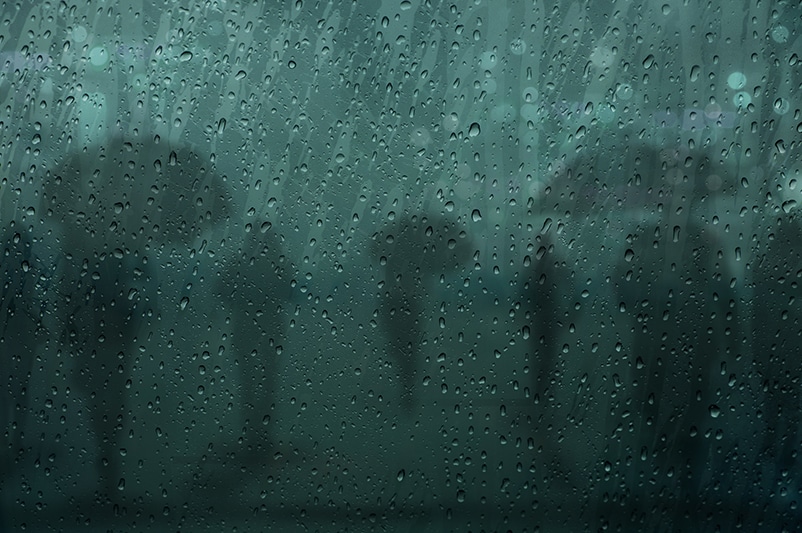This is Why We See So Many Roof Leaks in Fall
September 25, 2020 Laura MacCormac
So Many Roof Leaks
During the first few rainy days of Fall we get a lot of calls from our customers about roof leaks because it hasn’t rained in a while.
Those roofs have been quietly protecting buildings and not getting enough rain to actually expose any damage. It’s like pent-up demand. Damage goes unnoticed in summer if no one checks the roof. This is why so many roofs are vulnerable to damage in those first rain dumps in the Fall.
Early Fall is a great time to have roofs assessed because vulnerabilities that exist won’t be able to stand up to the harsh weather ahead. Roofs can be brittle after a hot summer due to UV ray damage to the roof membrane. Keeping the roof strong is your first line of defense.
Here are the Top 6 Reasons a Roof Leaks
1. Improper Drainage
This is an obvious one because it is easy to see the signs of gutter problems. Is it draining? Is it on tight or coming loose? There are a number of things that could be blocking gutter drainage such as ice, leaves, growing weeds, dirt, etc. Gutters should be checked at least twice a year. The pressure of the built-up water will cause a leak at the weakest area around it.
Drains get clogged easily because the water flowing to them brings debris. The drain screen you see here keeps the water flowing despite the leaves. However, in time, the build up of debris will clog the drain. Regular maintenance is the only answer.
2. Damaged Flashing
Flashing is used to protect areas of the roof where major parts join, like the roof edge, large vents, chimneys, HVAC units, etc. It diverts water away from the areas where water is most likely to get in. There are a variety of materials used to make the flashing from metal to liquid membranes. This example shows damaged metal flashing.
3. Granule Loss and Damaged Shingles
Direct UV rays damage the roof membrane; Granules are used to protect it. Shingles are coated with granules. Flat roofs typically have a layer of granules, though sometimes stones and other materials are used, the same rule applies. Weather causes degranulation. It’s important to monitor that protective layer and ensure shingles are in good condition.
Broken shingles need to be replaced to keep the roof membrane covered and protected. Water will seep under the shingle and rot the wood. You can see how the membrane is directly exposed in this example.
4. Deterioration of Roof Membrane
There are many types of roof membranes and all of them experience some kind of wear. If you are getting a roof replacement, avoid cheap roof membranes that claim to cost less. In the long run, that cheap roof membrane material will cost you more. Seams can open, membranes can be punctured, they can blister and crack and over time deteriorate.
5. Vents and other Roof Penetrations
There are several types of vents: doghouse, whirlybird, flat, chimney, plumbing, etc. Other penetrations are skylights, hatches, HVAC units, and more.
All of these need to be thoroughly sealed. Sealants wear down over time and that leads to water ingress. They can also rust which leads to holes, another big cause of leaks. All penetrations need to be looked at regularly to prevent leaks. In this example there is actually no caulking at this doghouse penetration.
6. Poor Ventilation
Condensation is how a roof can break down from the inside. The roofing system needs to breath so air can circulate and stay dry. If the ventilation system is not adequate or gets plugged up it will lead to condensation which will lead to mold growth and rot and water will find its way in and make the situation worse. When that gives way you not only have a leak to deal with but mold and the health issues and high costs of replacing damaged structures. The attic and soffit vents are important parts of ventilation and need to be maintained.

